Cubic Polynomial
A cubic polynomial is a polynomial of degree 3. It is in the form:
\[ax^3 + bx^2 + cx + d\]
where \(a\), \(b\), \(c\), and \(d\) are constants, and \(a \neq 0\).
Key Concepts:
- Degree: The degree of a cubic polynomial is 3, which means the highest power of the variable (in this case, \(x\)) is 3.
- Leading Coefficient: The leading coefficient is the coefficient of the term with the highest power of the variable. In a cubic polynomial, the leading coefficient is \(a\).
- Roots/Zeros: The roots or zeros of a cubic polynomial are the values of \(x\) for which the polynomial equals zero. A cubic polynomial can have up to 3 real or complex roots.
- Graph: The graph of a cubic polynomial is a curve that may have up to 2 turning points (local maxima or minima).
Study Guide:
- Understand the general form of a cubic polynomial: \(ax^3 + bx^2 + cx + d\).
- Learn to identify the degree and leading coefficient of a cubic polynomial.
- Practice finding the roots/zeros of a cubic polynomial by solving the equation \(ax^3 + bx^2 + cx + d = 0\).
- Study the behavior and key characteristics of the graph of a cubic polynomial, including turning points and end behavior.
- Work on problems involving applications of cubic polynomials, such as volume calculations and optimization.
Example:
Consider the cubic polynomial \(2x^3 - 3x^2 + 4x - 5\). Here, the degree of the polynomial is 3, and the leading coefficient is 2. The roots of the polynomial can be found by solving the equation \(2x^3 - 3x^2 + 4x - 5 = 0\). The graph of this polynomial will exhibit the characteristic shape of a cubic curve with up to 2 turning points.
Hope this guide helps you understand the concept of cubic polynomials better! Good luck with your studies!
.◂Math Worksheets and Study Guides Seventh Grade. The Pythagorean Theorem
Study Guide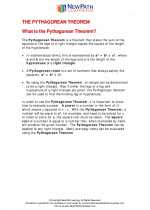 The Pythagorean Theorem
The Pythagorean Theorem  Study Guide
Study Guide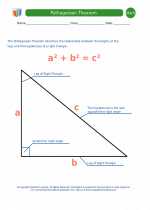 Pythagorean Theorem Definitions
Pythagorean Theorem Definitions  Worksheet/Answer key
Worksheet/Answer key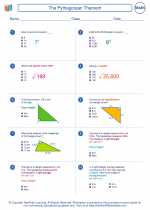 The Pythagorean Theorem
The Pythagorean Theorem  Worksheet/Answer key
Worksheet/Answer key The Pythagorean Theorem
The Pythagorean Theorem  Worksheet/Answer key
Worksheet/Answer key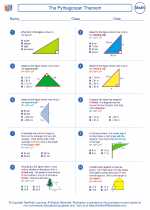 The Pythagorean Theorem
The Pythagorean Theorem  Worksheet/Answer key
Worksheet/Answer key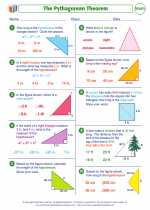 The Pythagorean Theorem
The Pythagorean Theorem  Worksheet/Answer key
Worksheet/Answer key Pythagorean Theorem Distance Problems
Pythagorean Theorem Distance Problems  Worksheet/Answer key
Worksheet/Answer key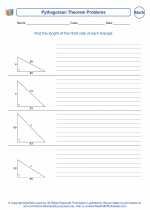 Pythagorean Theorem Problems
Pythagorean Theorem Problems  Worksheet/Answer key
Worksheet/Answer key Pythagorean Theorem Distance Problems
Pythagorean Theorem Distance Problems  Worksheet/Answer key
Worksheet/Answer key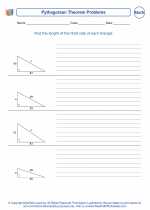 Pythagorean Theorem Problems
Pythagorean Theorem Problems  Worksheet/Answer key
Worksheet/Answer key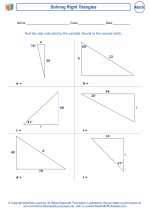 Solving Right Triangles
Solving Right Triangles  Worksheet/Answer key
Worksheet/Answer key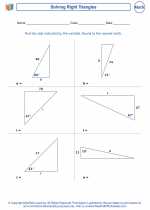 Solving Right Triangles
Solving Right Triangles 

 Study Guide
Study Guide
 Worksheet/Answer key
Worksheet/Answer key
 Worksheet/Answer key
Worksheet/Answer key
 Worksheet/Answer key
Worksheet/Answer key
 Worksheet/Answer key
Worksheet/Answer key
 Worksheet/Answer key
Worksheet/Answer key
 Worksheet/Answer key
Worksheet/Answer key
 Worksheet/Answer key
Worksheet/Answer key
 Worksheet/Answer key
Worksheet/Answer key
 Worksheet/Answer key
Worksheet/Answer key
 Worksheet/Answer key
Worksheet/Answer key

The resources above cover the following skills:
Geometry (NCTM)
Analyze characteristics and properties of two- and three-dimensional geometric shapes and develop mathematical arguments about geometric relationships.
Create and critique inductive and deductive arguments concerning geometric ideas and relationships, such as congruence, similarity, and the Pythagorean relationship.